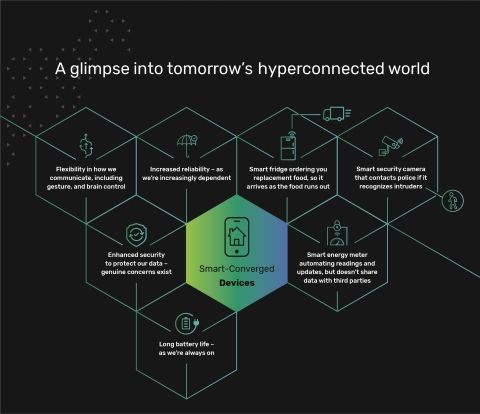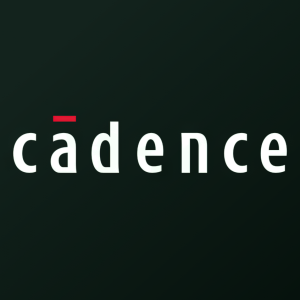New Cadence Report Reveals Majority of Consumers Believe Hyperconnectivity Will Positively Impact Their Lives
A majority of consumers believe hyperconnectivity driven by hyperscale computing will positively impact them within five years, according to a new report from Cadence Design Systems, Inc. (Nasdaq: CDNS). Cadence commissioned the survey to determine consumer awareness and impressions of hyperconnectivity and hyperscale computing and their impact on people’s lives. Released today, the report, Hyperconnectivity & You – A Roadmap for the Consumer Experience, delivers valuable insight on the opportunities and challenges of deploying electronic devices in the increasingly hyperconnected world of the consumer electronics, automotive and healthcare industries.

With hyperconnectivity impacting important areas of our lives like mobile phones/communication,
To download the full report, visit www.cadence.com/go/hyperconnectivityandyou.
Key Findings
Three key themes consistently emerged when speaking with consumers about hyperconnectivity: confidence, convenience and collaboration. Manufacturers should focus on increasing consumer confidence through full transparency in how data is being used, supporting better collaboration between people and technologies, and improving technology convenience.
The Cadence® report reveals that
Smart-Converged Devices:
- Great battery life, robust security and consistent reliability are the three most important factors in determining why consumers like a device.
- Touch and voice garner high levels of preference with end users, while newer device communication methods using facial recognition, gesture, eye movements and brain activity also resonate well.
- Data security is a key concern, with on-device data processing or a mix of on-device and in-the-cloud processing proving popular due to fear of hacking.
Intelligent Cars:
- Frictionless car maintenance and upgrades via software updates resonate well, as does the ability to buy products or services using in-car technology.
- Connectivity and autonomy will be important considerations when judging how advanced a car is.
- Ensuring drivers retain some control over a car’s decisions is critical to autonomy’s acceptance.
Digital Health:
- Consumers are willing to share their data when they’re confident it makes their lives easier.
-
Many consumers are comfortable getting medical treatment after a wearable device diagnosis, with
29% comfortable receiving medical treatment for cancer based solely on a wearable device’s diagnosis. - An examination by an AI doctor without a human doctor present is considered safe by many.
“As consumers, hyperconnectivity is greatly influencing our lives, enabled by the underlying computing developer ecosystem, from IP through semiconductors to systems companies,” noted Nimish Modi, senior vice president, marketing & business development at Cadence. “Through tighter collaboration, the industry has a tremendous opportunity to accelerate the development of innovative technologies incorporating power-efficient design, AI/ML enablement, security and safety to best reflect the needs and concerns of today’s hyperconnected consumers.”
Through its Intelligent System Design™ strategy anchored in computational software, Cadence continues to work with its partners and customers in the semiconductor, systems and software industries to drive the development of the disruptive technology that consumers have benefited from for more than 30 years. Hyperconnectivity and hyperscale computing can significantly improve the performance and capability of consumer-facing technologies and improve consumer user experiences.
Survey Methodology
Cadence commissioned Northstar Research Partners Ltd., an independent insight agency working out of London, to survey 3,073 adults in five key technology markets, including the U.S., U.K., Israel, China and Germany. Within each market, the people interviewed were representative of the adult population by age and gender. The research was conducted in Q4 2020.
About Cadence
Cadence is a pivotal leader in electronic design, building upon more than 30 years of computational software expertise. The company applies its underlying Intelligent System Design strategy to deliver software, hardware and IP that turn design concepts into reality. Cadence customers are the world’s most innovative companies, delivering extraordinary electronic products from chips to boards to systems for the most dynamic market applications, including consumer, hyperscale computing, 5G communications, automotive, mobile, aerospace, industrial and healthcare. For seven years in a row, Fortune magazine has named Cadence one of the 100 Best Companies to Work For. Learn more at cadence.com.
© 2021 Cadence Design Systems, Inc. All rights reserved worldwide. Cadence, the Cadence logo and the other Cadence marks found at www.cadence.com/go/trademarks are trademarks or registered trademarks of Cadence Design Systems, Inc. All other trademarks are the property of their respective owners.
View source version on businesswire.com: https://www.businesswire.com/news/home/20210628005021/en/







